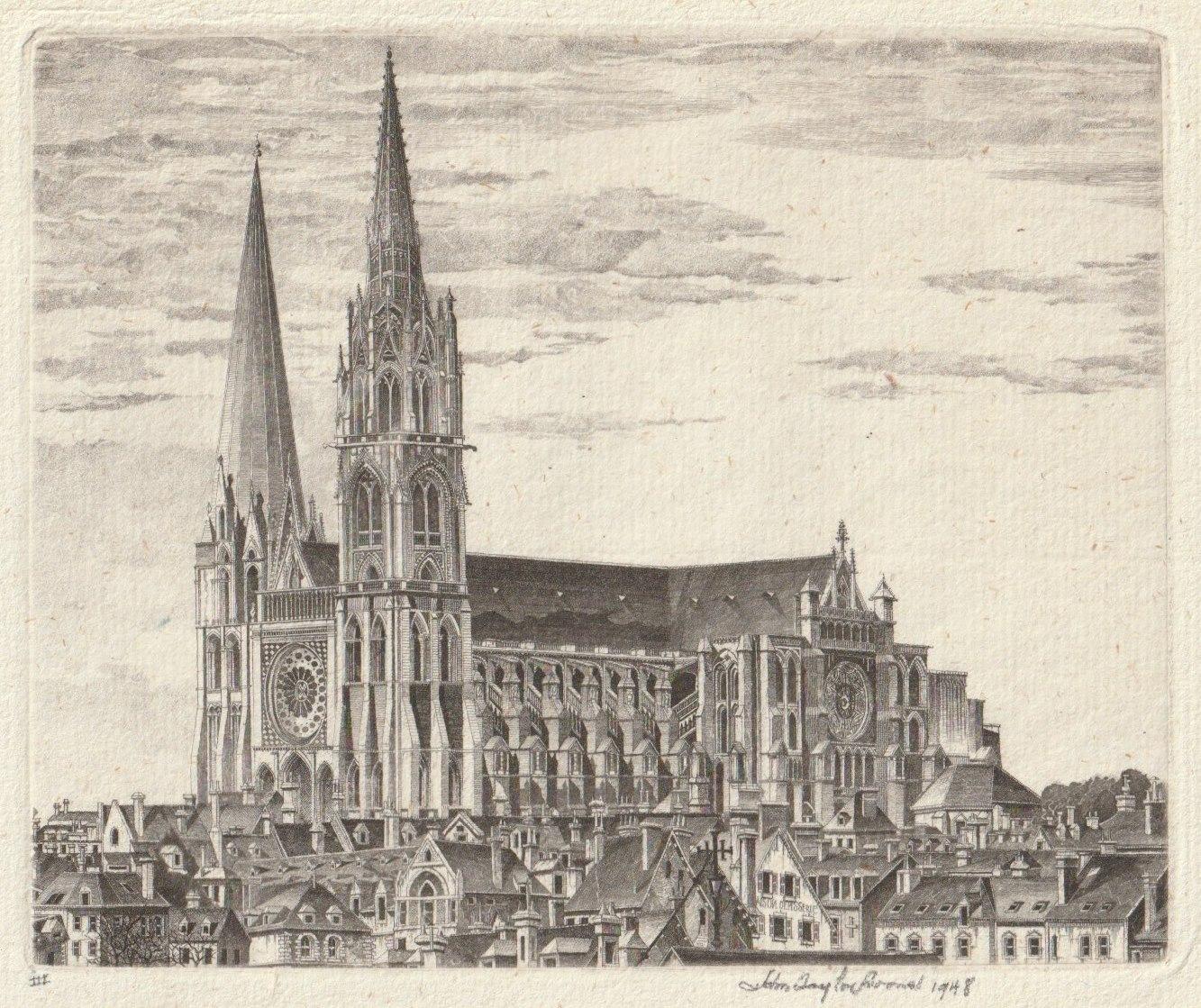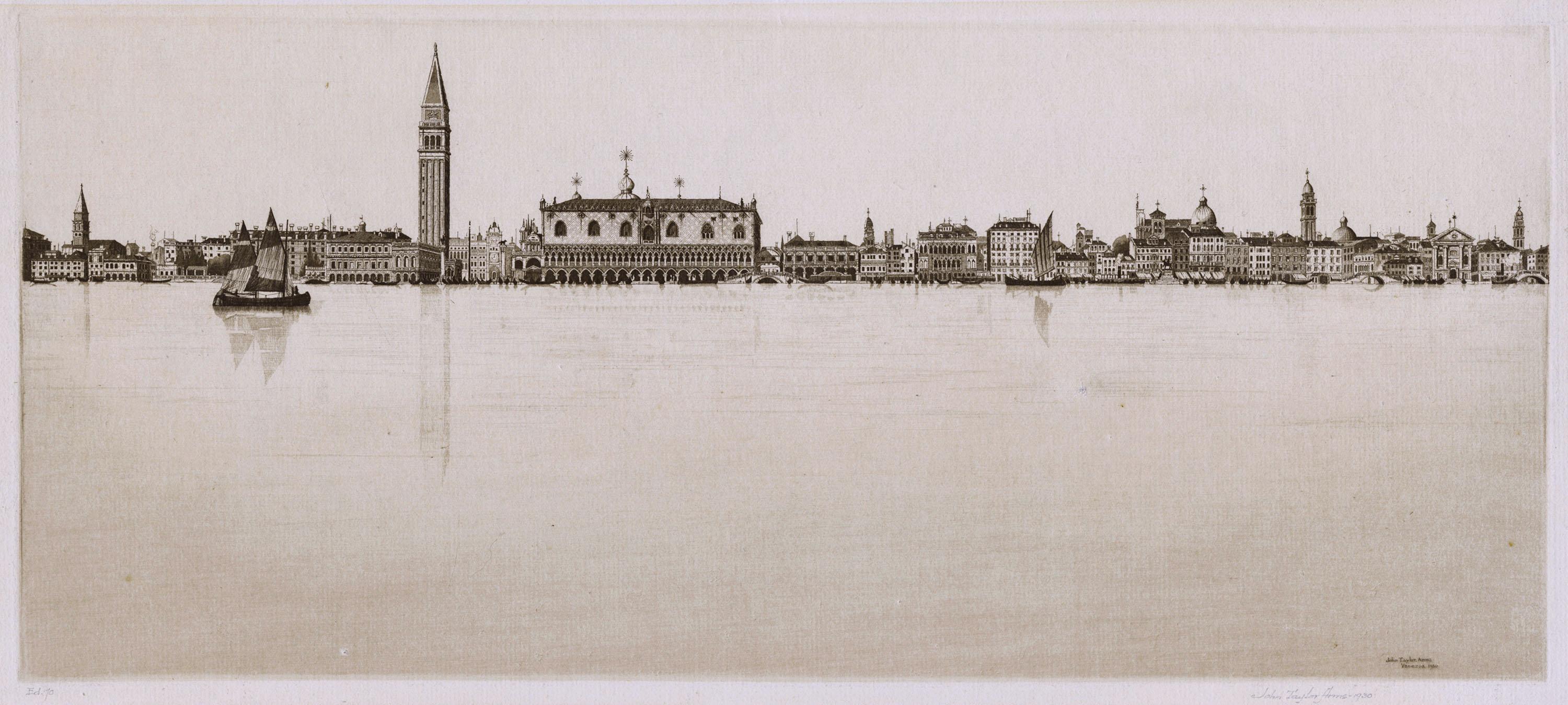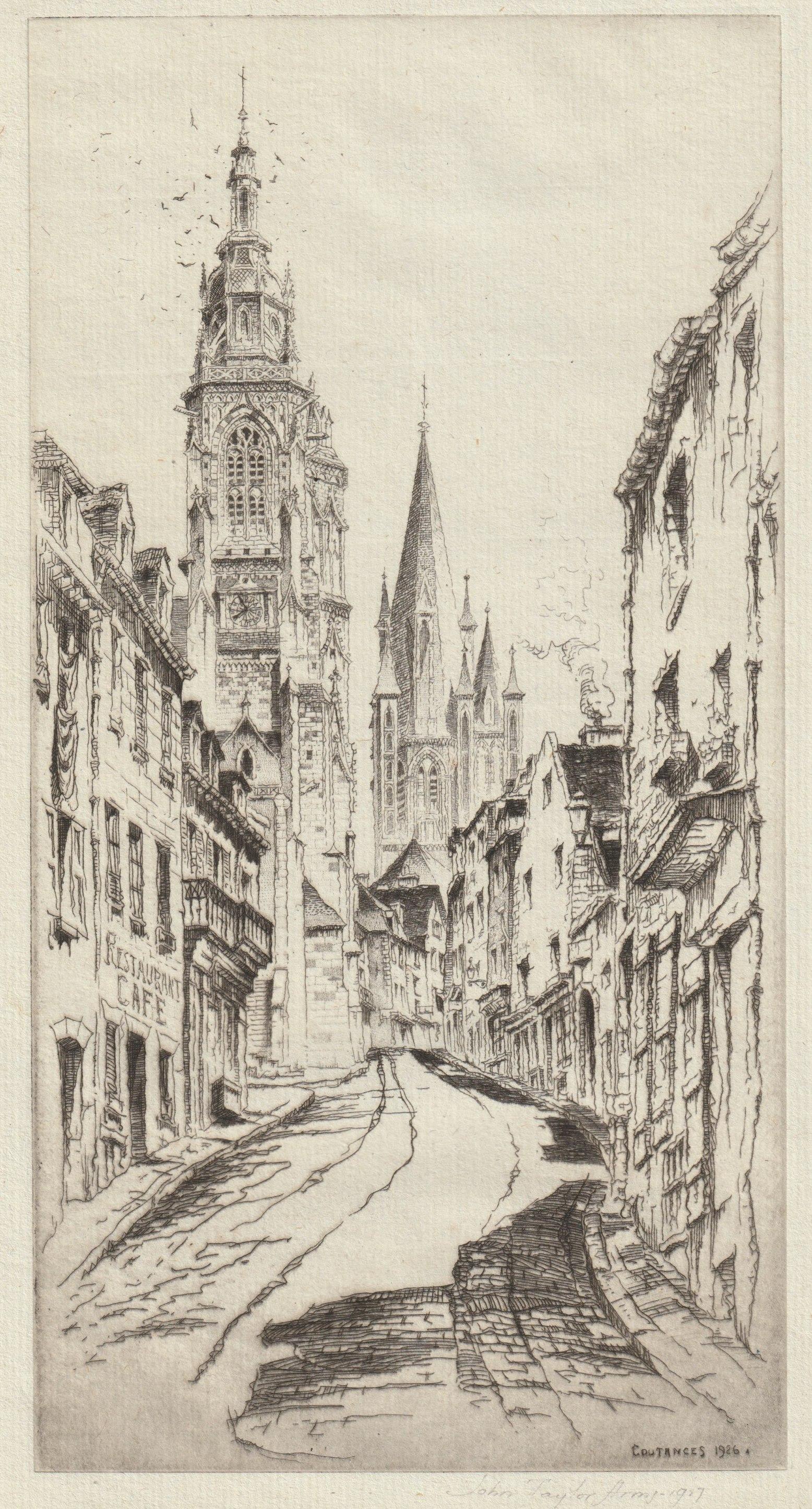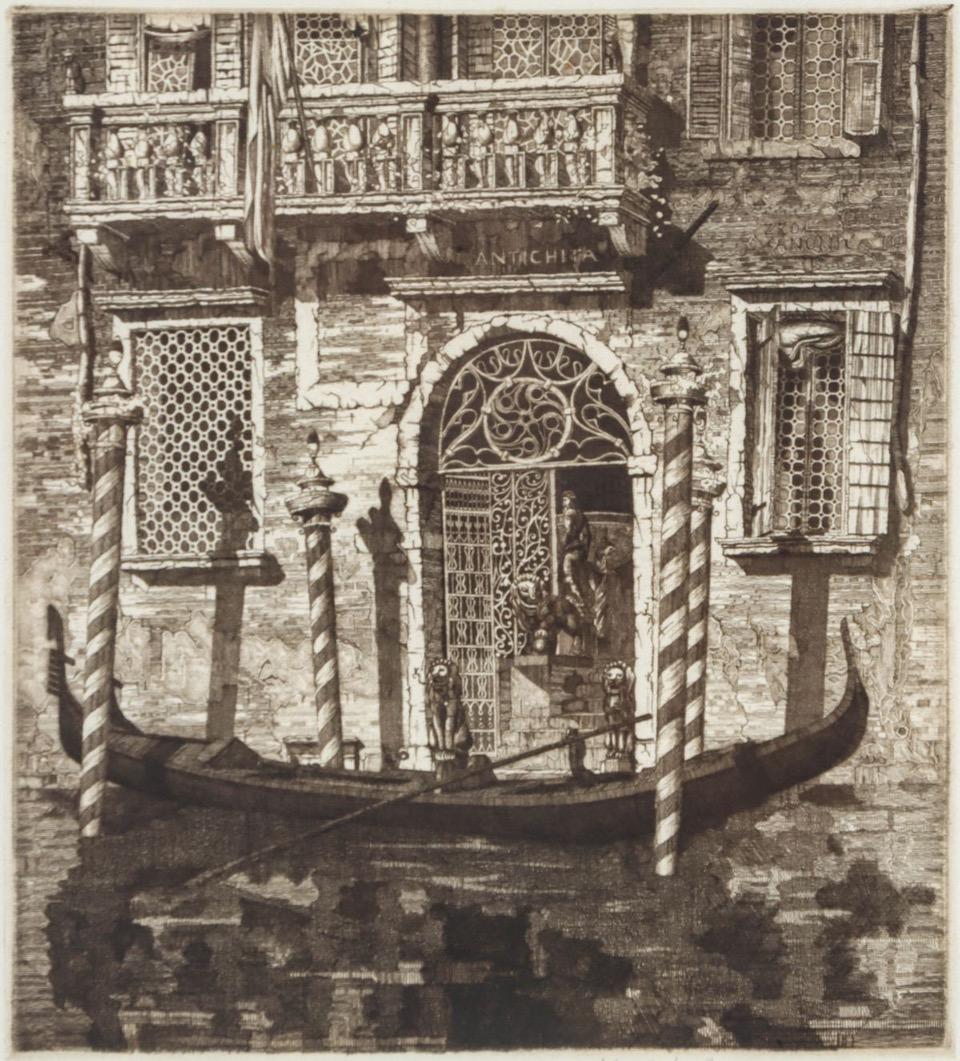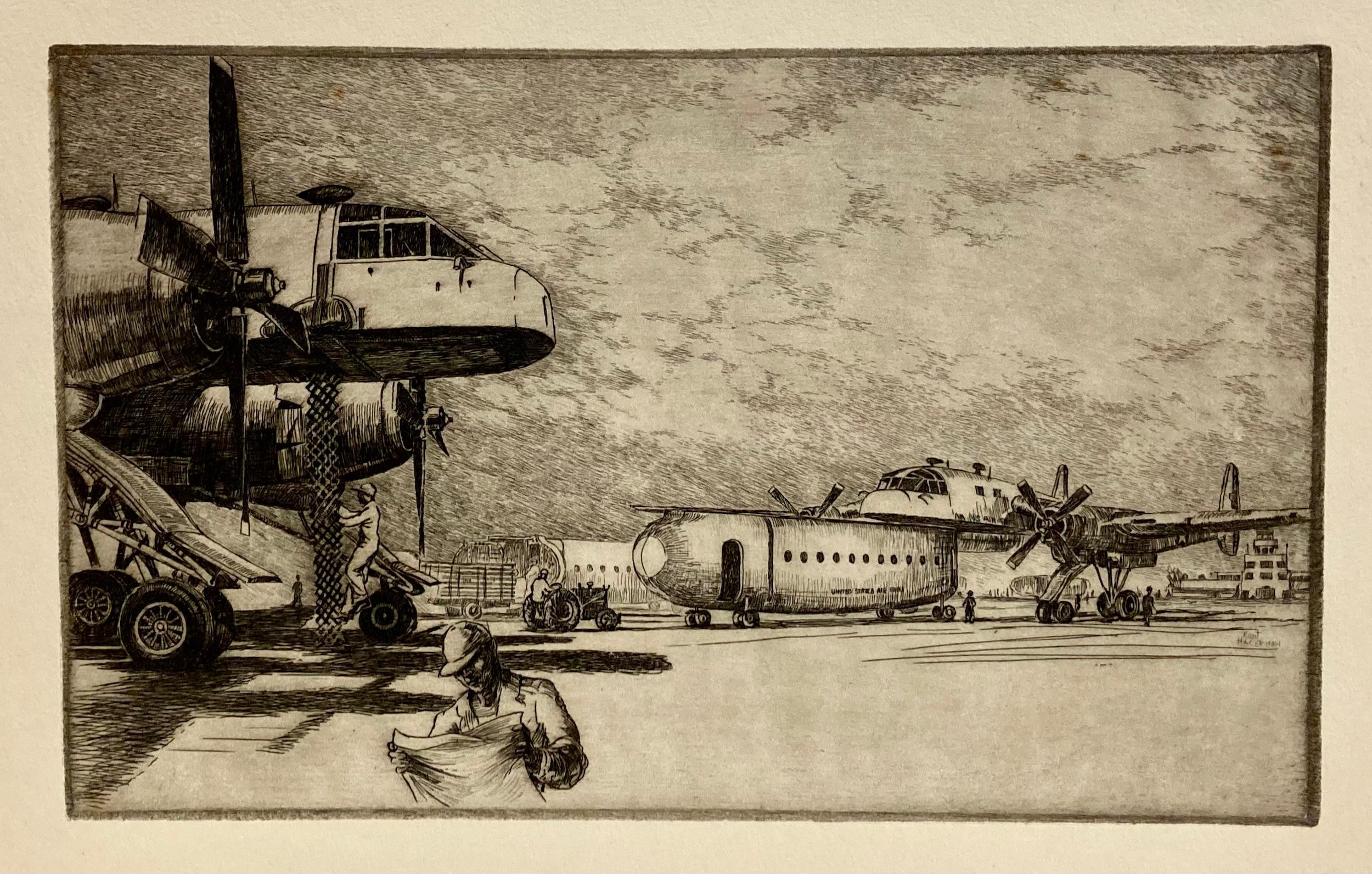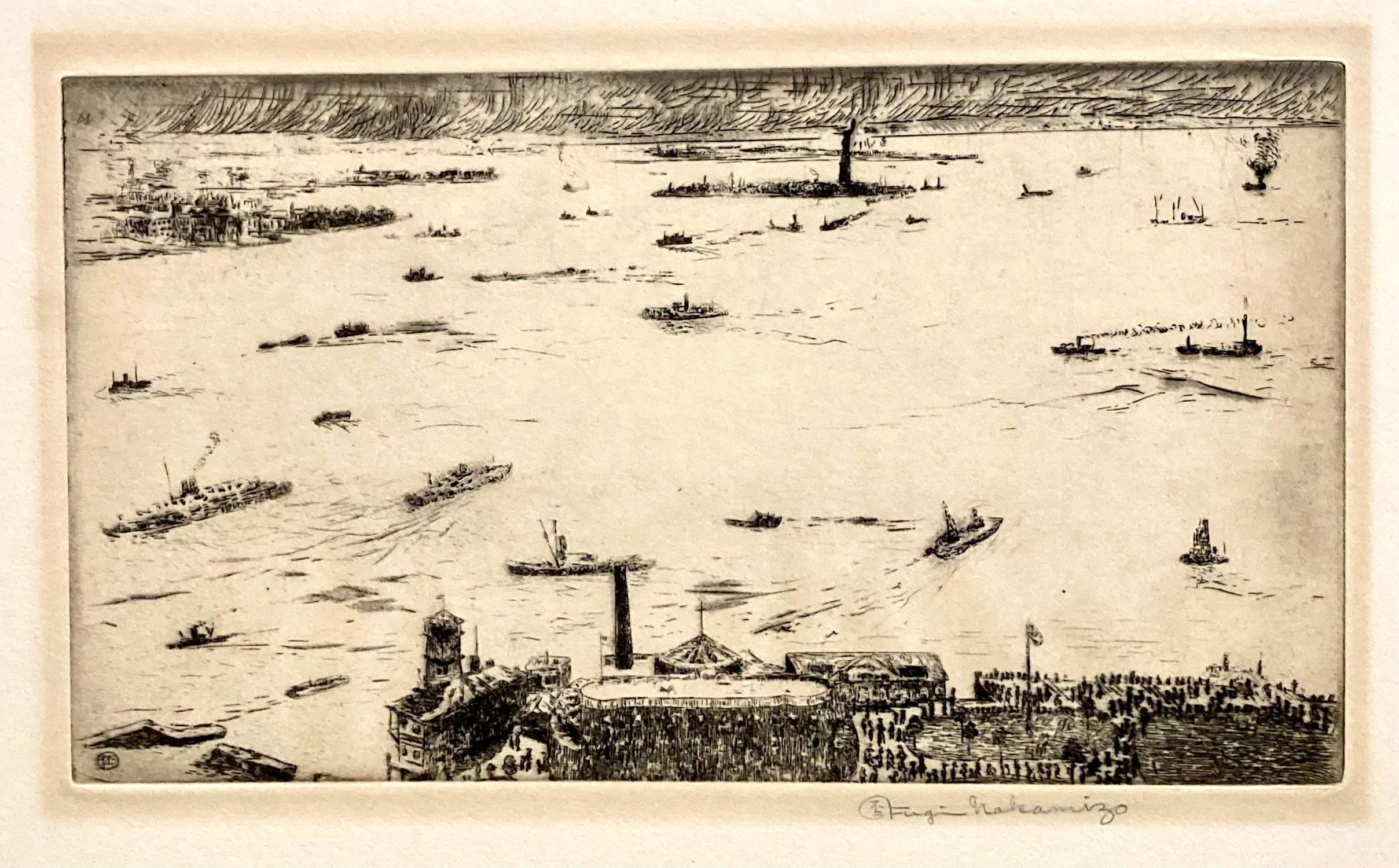Ernest David RothErnest David Roth, Toledo, The Approach1921
1921
About the Item
- Creator:Ernest David Roth (1879 - 1964)
- Creation Year:1921
- Dimensions:Height: 11 in (27.94 cm)Width: 11.5 in (29.21 cm)
- Medium:
- Movement & Style:
- Period:
- Condition:There are old hinges but no problems.
- Gallery Location:New York, NY
- Reference Number:1stDibs: LU141027957962
Ernest David Roth
Ernest David Roth was born in Stuttgart, Germany in 1879 and, at the age of five, immigrated with his parents to the United States. He studied painting at the National Academy of Design under George Maynard and Edgar Ward and the New York School of Art under F. Luis Mora. Roth was a regular contributor to shows at the National Academy and the Pennsylvania Academy. In his painting and etching, Roth concentrated on simple architectural views, rarely including people in his scenes. He has received awards from the Salmagundi Club in 1911, 1912, 1915, 1917 and 1918, from the Chicago Society of Etchers in 1914 and 1936, from the Society of American Etchers in 1935 and from the Pennsylvania Academy of Fine Arts in 1930. He received a silver medal for etching and a bronze medal for painting at the Panama-Pacific Exposition in 1915. Roth was a master printer as well as etcher, and he printed etchings for other artists, notably John Sloan. He also printed William Blake's large etching of The Pilgrimage to Canterbury. He lived and worked in Manhattan, and subsequently moved to West Redding, Connecticut.
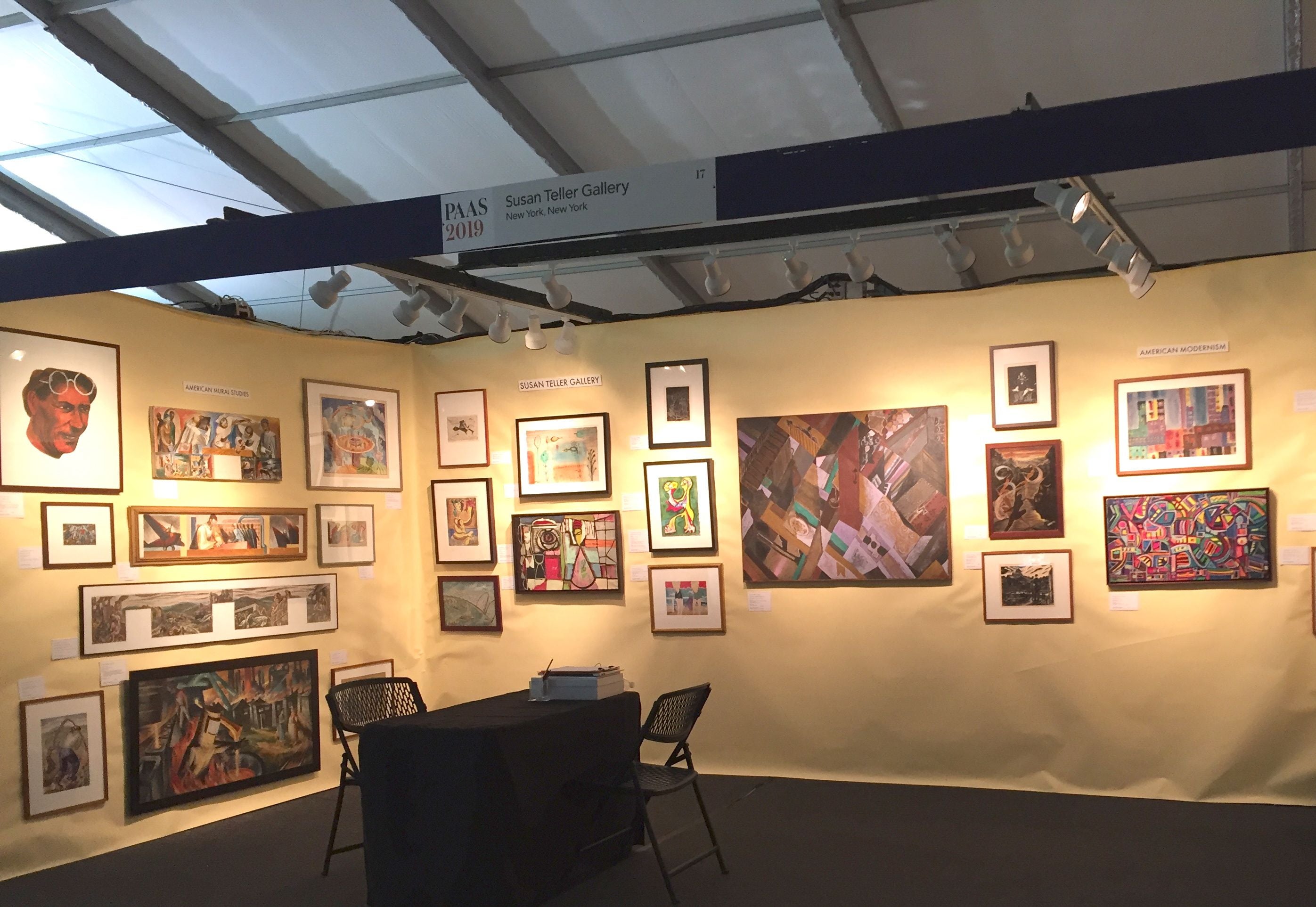
- ShippingRetrieving quote...Ships From: New York, NY
- Return PolicyA return for this item may be initiated within 7 days of delivery.
- Kent Hagerman, (United States Air Force, Fairchild XC-120 Packplane)By Kent HagermanLocated in New York, NYKent Hagerman was an amazing draftsman who managed to get fantastic detail into his work while showing the environment and atmosphere. This print captures the moment a 'pod' is bein...Category
Mid-20th Century American Modern Figurative Prints
MaterialsEtching
- Fugi Nakamizo, New York Harbor from the BatteryLocated in New York, NYJapanese born, Fugi Nakamizo came to New York City in 1910. He studied at the Art Students League and Cooper Union, NYC, and also printmaking with Joseph Pennell. He worked on the Federal Public Works of Art Project in the 1930s and in the 40s, during WWII, was interned at the Japanese-American internment camp in Topaz, Utah. His work is in the permanent collections of the Metropolitan Museum of Art and the Brooklyn Museum of Art, NYC, and the Library of Congress and Smithsonian Institution, Washington, DC. This etching of New York...Category
1920s American Modern Figurative Prints
MaterialsEtching
- Luigi Lucioni, (New England Barn)By Luigi LucioniLocated in New York, NYPainter and printmaker, Luigi Lucioni was known for his portraits, still life paintings, and landscapes of Vermont and Italy. This 'New England Barn' ...Category
Mid-20th Century American Modern Figurative Prints
MaterialsEtching
- Bernard Sanders, Boy in the woodsLocated in New York, NYThere's so often a mysterious or evocative atmosphere that permeates Sander's work. Signed in pencil; titled in lower margin in pencil.Category
Early 20th Century American Modern Landscape Prints
MaterialsEtching
- Irving Guyer, Christmas Trees on Second Street (NYC)By Irving GuyerLocated in New York, NYPhiladelphia-born Irving Guyer attended the Art Students League and worked in New York City before moving to California. This print is signed and titled i...Category
1930s American Modern Figurative Prints
MaterialsEtching, Drypoint
- Paul Geissler, PhiladelphiaLocated in New York, NYPaul Geissler's view of downtown Philadelphia features it's wonderful city hall. Philadelphia is gifted with an actual plan and the city hall itself is a...Category
Early 20th Century American Modern Landscape Prints
MaterialsEtching
- Chartres, The MagnificentBy John Taylor ArmsLocated in Middletown, NYEtching on handmade cream laid paper, 3 1/2 x 4 1/4 inches (890 x 108 mm), full margins. Signed, dated and inscribed "III" in pencil, lower margin. Edition of 150, third state (of th...Category
Early 20th Century American Modern Landscape Prints
MaterialsEtching, Laid Paper
- La Bella VeneziaBy John Taylor ArmsLocated in Middletown, NY(New York: John Taylor Arms, 1930) Etching on antique cream laid paper with a fancy "G" watermark, 7 1/8 x 16 1/2 inches (182 x 442 mm), full margins. Signed, dated and inscribed "Ed. 70" in pencil, lower margin. From a total edirion of 81 plus 5 trial proofs. Printed by Henry E. Carling. Number 18 from the Italian Series. A superb impression of this scarce print, with all of the subtleties and details of the reflections in the water printing clearly. [Fletcher 232] [Illustrated: Page 192, Arms, Dorothy Noyes, "Hilltowns and Cities of Northern Italy"]. Along with his constant companion and wife, Dorothy Noyes, Arms spent decades exploring and documenting gothic structures throughout Europe. Noyes, an accomplished travel writer, had gifted Arms an etching set...Category
1930s American Modern Landscape Prints
MaterialsEtching
- CoutancesBy John Taylor ArmsLocated in Middletown, NYEtching on thin, bluish-green cream laid paper, 9 1/4 x 4 3/4 inches (233 x 120 mm), full margins. Signed and dated in pencil, lower margin. First and only state. Printed by Frederi...Category
Early 20th Century American Modern Landscape Prints
MaterialsEtching, Laid Paper
- Palazzo dell'AngeloBy John Taylor ArmsLocated in Middletown, NYPalazzo dell'Angelo 1931 Etching and drypoint on cream-colored, handmade laid paper with deckle edges, 7 1/4 x 6 3/4 inches (185 x 171 mm), edition of 100, full margins. Signed, dated and numbered "Ed. 100" in pencil, lower margin, second state (of three). Printed by Henry Carling, New York. Extremely minor mat tone and some inky residue in the top right corner, all unobtrusive and well outside of image area. An exquisite impression of this intricate image, with astonishing detail, and all the fine lines printing clearly. The image represents the first print which Arms printed on his own handmade paper. Framed handsomely with archival materials and museum grade glass in a wood gilt frame with a flower and garland motif. Illustrated: Dorothy Noyes Arms, Hill Towns and Cities of Northern Italy, p. 180; Anderson, American Etchers Abroad 1880-1930; Eric Denker, Reflections & Undercurrents: Ernest Roth and Printmaking in Venice, 1900-1940, p. 116. [Fletcher 233] Born in 1887 in Washington DC, John Taylor Arms studied at Princeton University, and ultimately earned a degree in architecture at the Massachusetts Institute of Technology in 1912. With the outbreak of W.W.I, Arms served as an officer in the United States Navy, and it was during this time that he turned his focus to printmaking, having published his first etching in 1919. His first subjects were the Brooklyn Bridge, near the Navy Yard, and it was during his wartime travel that Arms created a series of extraordinarily detailed etchings based on Gothic cathedrals and churches he visited in France and Italy. He used what was available to him, namely sewing needles and a magnifying glass, to create the incredibly rich and fine detail that his etchings are known for. Upon his return to New York after the war, Arms enjoyed a successful career as a graphic artist, created a series of etchings of American cities, and published Handbook of Print Making and Print Makers (Macmillan, 1934). He served as President of the Society of American Graphic Artists, and in 1933, was made a full member of the National Academy of Design. In its most modern incarnation, Palazzo dell'Angelo was constructed in or around 1570. The building, which has a rich and storied history, was erected upon the ruins of an earlier structure which predates the Gothic period. Some remnants of the earliest features of the residence were most certainly still visible when Arms visited, as they are today. Having a background in architecture, there's no question that Arms was moved by the beauty, history and ingenuity represented in the physical structure. One thing specifically gives away Arms's passion for the architecture, and that is the fact that he focused on the building's Moorish entranceway, balustrade, and two mullioned windows, and not on the curious Gothic era bas-relief of an angel nestled into the facade of the building, after which the structure is named. The sculpture itself doesn't appear in Arms's composition at all, despite the fact that it is the feature of the building that is most famous in its folklore. Arms instead focuses on the oldest portion of the architecture, even documenting some of the remnants of a fresco, and a funerary stele for the freedman Tito Mestrio Logismo, and his wife Mestria Sperata (visible above the water level, to the left of the door, behind the gondola), which was first described in 1436. Among the many notable bits of history regarding the Palazzo, it has been documented that Tintoretto painted frescos of battle scenes on the facade of the building. The paintings have been lost to time and the elements, but not entirely to history. The empty frame...Category
1930s American Modern Figurative Prints
MaterialsEtching, Drypoint
- Sanctuary (St. Anthony's Garden at rear of St. Louis Cathedral on Royal Street)By Frederick MershimerLocated in New Orleans, LAThis French Quarter garden is a serene haven with a lighted statue of Christ that exists not very far from the raucous revelry of New Orleans' Bourbon S...Category
1990s American Modern Landscape Prints
MaterialsAquatint, Mezzotint
- Canyon Road, Sante FeBy Will (William Howard) ShusterLocated in Missouri, MOCanyon Road, Santa Fe By. William Howard Shuster (American, 1893-1969) Signed Lower Right Edition of 100 Lower Center Titled Lower Left Unframed: 4" x 4.75" Framed: 15.75" x 15.25" ...Category
20th Century American Modern Landscape Prints
MaterialsEtching
